A tour of the Cotopaxi prison, one of the most dangerous in Ecuador, begins with visitors donning a vest and adjusting a helmet, as if entering a war zone. One must also cover one’s face to avoid recognition. Ecuadorian Army soldiers took over the prison a few weeks ago and that means that a thousand of them are spread out in the pavilions to control the gang members, the real masters of this place. The military wear combat gear and are ready for action. Ecuador’s prisons have often been the scene of bloody riots provoked by criminal groups that have resulted in dozens dead; the casualties have been beheaded and had their hearts ripped out as a display of power.
Here, the prisoners are in charge, and they fuel their criminal business by extorting the relatives of detainees. “To authorize a visit, they paid between $10 and $20,” says the officer who led members of the media, including EL PAÍS, on a tour of the prison. Everything went through the ringleaders: the food, the toiletries, the medicines, the commissary, the phone calls, the high-speed internet they managed to have installed. How did they get these luxuries and activate a criminal infrastructure in a correctional facility guarded by the state? Who authorized it? “It was around 2016 when [the state] lost control of the prisons,” he says; SNAI [National Service of Integral Attention to Adults Deprived of their Liberty and Adolescent Offenders] was the state institution responsible for the penitentiary system. But there are no names, no one is being investigated, even after four prison massacres occurred there in the last three years; criminal organizations orchestrate violence in the streets from prison.
During the visit, there is something uncomfortable, an undisclosed truth: the night before three prisoners escaped from the maximum-security wing. A thick silence surrounds this event, which no one wants to talk about. The prison doesn’t just hold gang members but also politicians such as Jorge Glas and controversial figures in corruption cases. The 14-square-hectare prison is an hour and a half from Quito. “The prison is under control,” the official repeats constantly.
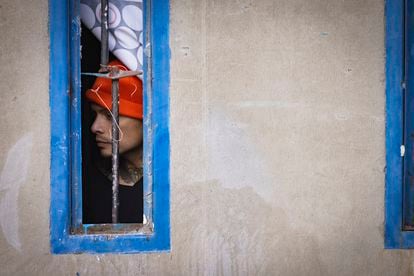
We are not allowed to ask questions of the prisoners on the way, not even of the detainee sentenced to nine years for drug trafficking who was leaving the health center. He is 74 years old, and was accompanied by two other prisoners who carried him by the arm, holding him. He walks slowly, with difficulty. “I am diabetic, hypertensive…”. His testimony is interrupted by a military order not to speak. The Cotopaxi prison is under the control of the criminal gang Los Lobos, which is fighting for control of drug trafficking with Los Choneros. To make clear to everyone who is in charge of this place, they tattooed the wall in the middle of the prison with their wolf symbol. Upon entering the prison heavily armed, the military covered the mural with paint. Then they entered the cells and took everything from the prisoners. They wanted to impose a regime of control and discipline like the one President Nayib Bukele has implemented in El Salvador’s prisons. But for the moment, one cannot say that the Ecuadoran military has reached that level of domination.
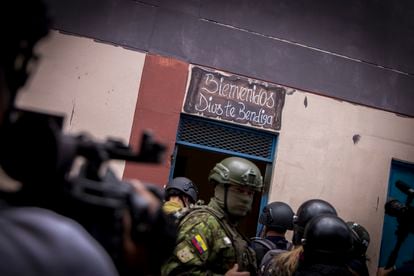
“We are hungry!” “We have no way to wash!” “We want visitors!” The prisoners shout complaints from their cells when they become aware of the presence of strangers in the yard. Heads and arms appear through the narrow windows with broken glass, seeking to attract attention. They all shout. They wave white T-shirts. The screams come from the three wards of the minimum-security area. The military warns that they are no angels, that they are here because they committed crimes.
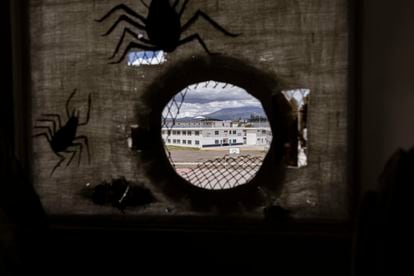
Inside one of the wards, only a few prisoners dressed in orange jumpsuits are outside their cells, standing close to the wall. They just stare in silence. “We’re hungry, they give us very little food and they took away the commissary,” a prisoner from cell 01 says, breaking the silence. The commissary is the prison store where family members deposit money so prisoners can buy sweets, chips, sodas, cookies, something to fill them up. The food rations they are given are not enough. According to a study conducted by the Center for Interdisciplinary Ethnography, Kaleidos, prisoners’ families can pay the leaders of each cellblock up to $250 per month for access to the store, toiletries and cleaning supplies, telephone calls and security.
It is a profitable business that can move up to a million dollars a month for the 4,346 people held in the Cotopaxi prison, and it more than finances other luxuries for the gang leaders. In addition, this movement of people from outside the prison is the conduit for arms, ammunition and explosives. In order for everything that has been found in the prison to be able to enter, it has been necessary to open the doors without passing any security points so that trucks with cement, tiles, beds, mattresses, cartons with bottles of whiskey, soft drinks, refrigerators, and stoves can get inside.
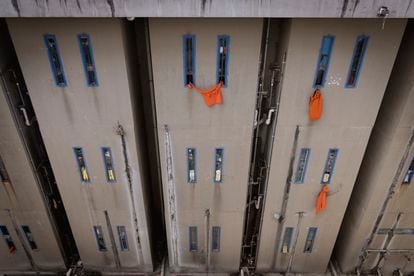
In the medium-security block, they remodeled the cells on the third floor that should have had two cement bunks and an aluminum toilet to house five prisoners. “Two cells were converted into a suite with a double bed, a small living room, a private bathroom,” says the officer, describing how they found the facilities on January 14 when they intervened. It took them 15 hours to gain control of the entire prison. The military were forbidden to go beyond the first security point, but the presidential decree of internal armed conflict and social revolt, issued by the new president, Daniel Noboa, allowed the entry of a contingent of over 2,000 armed military personnel.
The prisoners had booby-trapped gas tanks to prevent their passage and were met with gunfire from the tops of the buildings. Once the military entered, they placed the prisoners face down on the floor of the courtyard, while others were responsible for removing everything from the cells. Absolutely everything. In some cases, they destroyed walls and floors to find weapons and ammunition. “We know that there are still weapons hidden in some parts, but we are investigating where, because right now we may be standing over a cove where they have hidden these objects.” For that, they would have to destroy the entire prison, where nothing works. The scanners at the entrance sound when a person passes through for no reason; they do not scan the body, nor do they detect prohibited objects being brought inside. The security cameras are destroyed. The center is guarded under the watchful eye of the military who are at different points and in the six control towers. Everything is done manually by the military officers and the policemen who check the backpacks, purses, clothes and shoes at the two entrance points.

“The Armed Forces did not know how to manage prisons, but we have tried to do the best we can,” says the military officer in charge. For now, the strategy is not to allow visitors to enter until they find a way to control who comes into the prison. A month after the military intervention, they have begun to allow family members to hand in a list of toiletries and a pad for them to sleep. Those who found out about that have begun to leave the items at the entrance of the prison, with the names of their incarcerated relatives, the ward, the cell number and sometimes messages: “I love you son. God bless you” with a heart drawn on them.
“For our security and to have control over the center it is necessary to have them like this, inside the cells and padlocked,” the officer says. They are not allowed to play soccer in the courtyard, nor are they allowed to do carpentry or ceramics. The current regime is based on strict schedules and stretching activities directed by a military officer. They are woken up at 6 a.m., forced to keep the place clean; they shake out and turn the mattresses over. The five prisoners living in each tiny cell must give each other space to do so. They clean the floor and the toilet. Only a few are allowed to go out each day and clean the inner yard in shifts. They are allowed to go outside at lunchtime. They must sit in the yard and eat from plastic containers. They leave everything clean and return to the cells. They go back to nothing.
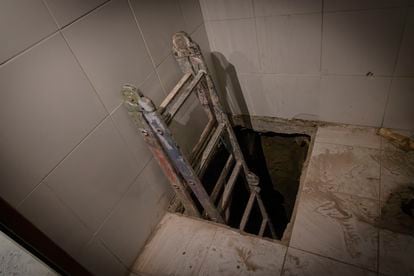
The image is very different from the videos that the prisoners posted on social media, where they bragged about the parties they threw in the discos they built: loud music, alcohol, drugs, the jewelry they wore, money. They walked around all the wards whenever they wanted, dressed in brand-name clothes, playing cards or drinking. The same life they had outside, where they were sentenced for crimes, continued inside, but with privileges and state protection.
The tour skips the maximum-security pavilion. A soldier prevents us from even seeing what it is like inside — how the 883 most dangerous prisoners who are housed in that section live — through the crack in the blue metal door. That’s where the leaders of the Lobos are, those who ordered terrorist car bomb attacks in Quito’s busiest streets.
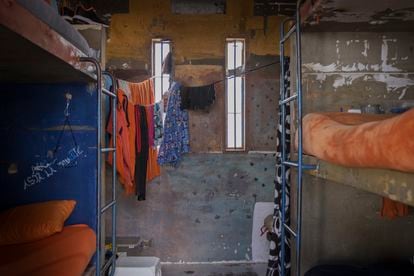
According to initial police investigations, the assassination of presidential candidate Fernando Villavicencio was planned from there. The assassins were told to shoot the politician four times from there. It was also there that the three prisoners sentenced for the murder escaped in the early morning of February 22, while the military guarded the cells, with police at the security checkpoints and prison guides in the wards. Nothing prevented the inmates’ escape; they continue to have power over the State. Although the government tries, it still doesn’t have Cotopaxi under its control.
Sign up for our weekly newsletter to get more English-language news coverage from EL PAÍS USA Edition
This post was originally published on this site be sure to check out more of their content.






